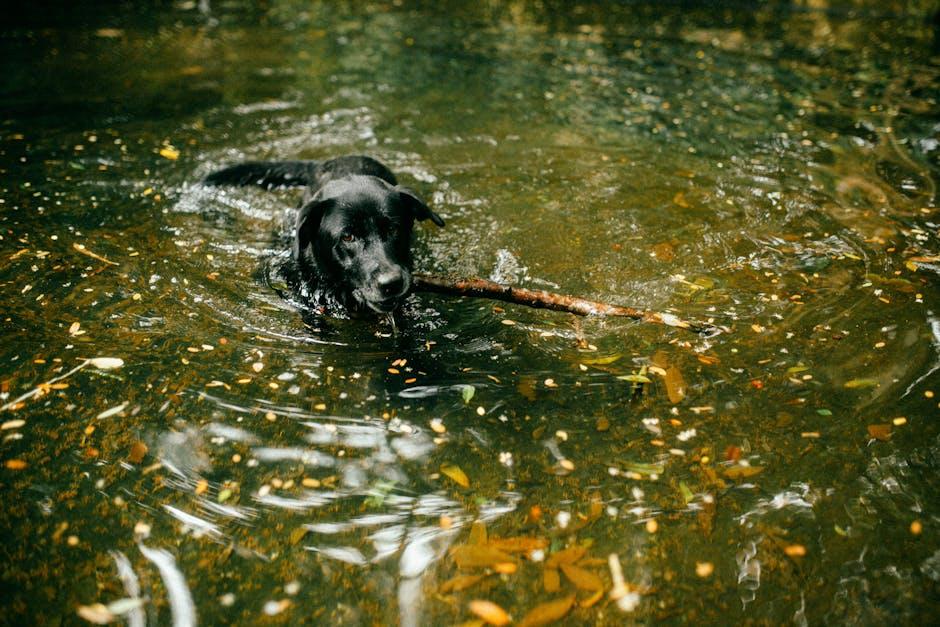Playing with your dog is one of the most joyful aspects of pet ownership, a time for bonding, exercise, and mutual delight. However, if your furry friend has a tendency to nip or bite during playtime, it can quickly turn a fun session into a worrisome one. Understanding why dogs bite during play and learning how to gently redirect this behavior is essential for fostering a safe and enjoyable environment for both you and your pet. In this guide, we will explore practical, compassionate strategies to help you manage and reduce playful biting, ensuring that playtime remains a positive experience for everyone involved. Whether you’re a new dog owner or looking to refine your training techniques, these tips will equip you with the tools you need to nurture a well-mannered, happy companion.
Understanding Why Dogs Bite During Playtime
When engaging in play, dogs often use their mouths as a way to explore and interact with their environment. This behavior, while natural, can sometimes lead to nips and bites that may be uncomfortable or concerning for their human companions. Understanding the root causes of this behavior can help in managing it effectively. Dogs might bite during playtime due to a variety of reasons:
- Instinctual Behavior: Playful biting is a natural part of a dog’s instinct to hunt and chase, which is often expressed through mouthing.
- Lack of Training: Puppies, in particular, might not yet know the boundaries of acceptable play, and need guidance to learn what’s appropriate.
- Overexcitement: During an intense play session, dogs can become overstimulated, leading to more vigorous biting.
- Teething: Younger dogs may bite more during play as they go through teething phases, seeking relief from discomfort.
By recognizing these underlying factors, pet owners can better address and redirect biting behavior during playtime, ensuring a safe and enjoyable experience for both the dog and their human friends.

Creating a Safe and Engaging Play Environment
Ensuring your furry friend enjoys a safe and stimulating play area is key to curbing unwanted biting behavior. Start by providing a variety of toys that are designed for chewing, such as rubber bones or squeaky toys, which can help redirect their urge to bite. Make sure the play area is free of any hazards that could lead to frustration or over-excitement, which often result in nipping.
- Rotate toys regularly to keep your dog engaged and interested.
- Incorporate interactive play sessions, like fetch or tug-of-war, that encourage positive interactions.
- Set clear boundaries with consistent commands like “no bite” to reinforce gentle play.
- Provide praise and treats when your dog plays nicely without biting, reinforcing good behavior.
By crafting a playful yet structured environment, you not only minimize the risk of biting but also nurture a stronger bond with your pet. Remember, patience and consistency are your best allies in this journey.
Training Techniques to Encourage Gentle Play
- Redirect Attention: When your furry friend gets a bit too excited with their nibbles, gently redirect their attention to a toy or chewable that is appropriate for biting. By consistently offering an alternative, you teach them what’s acceptable and what isn’t.
- Positive Reinforcement: Rewarding good behavior is crucial. Whenever your dog plays gently without using their teeth, offer praise, treats, or extra belly rubs. Positive reinforcement helps them associate gentle play with positive outcomes.
- Use Time-Outs: If your dog becomes too rough, a brief time-out can be effective. Cease play and ignore them for a short period. This pause communicates that rough behavior leads to the end of fun, encouraging them to play more gently next time.
- Consistent Commands: Implement clear commands like “gentle” or “easy” during play. Consistency is key, so ensure all family members use the same commands to avoid confusion.
Incorporating these techniques into your playtime routine not only helps curb biting but also strengthens the bond between you and your pet, fostering a harmonious and joyful environment for both of you. Remember, patience and consistency are your best tools in teaching your dog the joys of gentle play.

Building a Trusting Relationship with Your Dog
Establishing a foundation of trust with your furry friend is essential for a harmonious playtime experience. Communication is key—dogs often bite during play due to overexcitement or misunderstanding of your cues. To address this, observe your dog’s body language closely. Pay attention to signs such as wagging tails, perked ears, or relaxed postures, which indicate they are engaged and happy. Conversely, look for signs of discomfort or overstimulation, like growling or showing teeth, and respond appropriately by pausing the play.
- Set clear boundaries: Consistently reinforce what behaviors are acceptable and which are not. Use commands like “gentle” or “no bite” and reward your dog with treats or affection when they comply.
- Use toys wisely: Always have toys at hand that are appropriate for your dog’s size and strength. Redirect their biting from your hands to a toy to help them understand what is acceptable to chew on.
- Practice patience: Building trust takes time. Ensure that your playtime is a positive experience by keeping sessions short and sweet, gradually increasing the duration as your dog learns to control their excitement.

